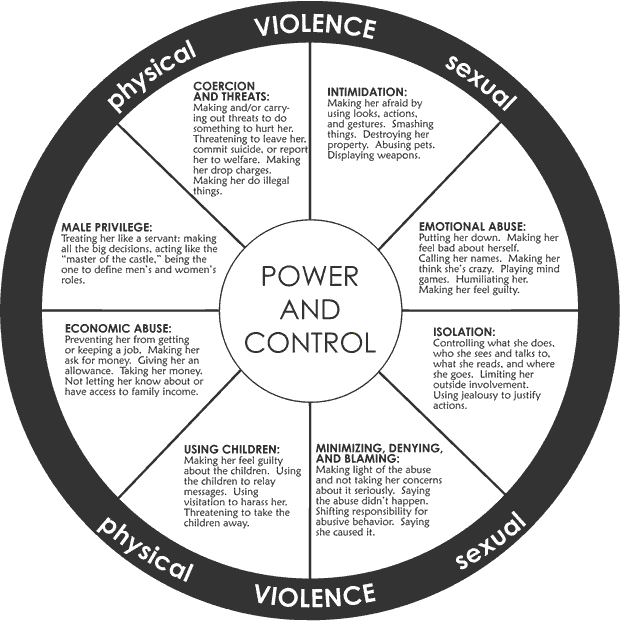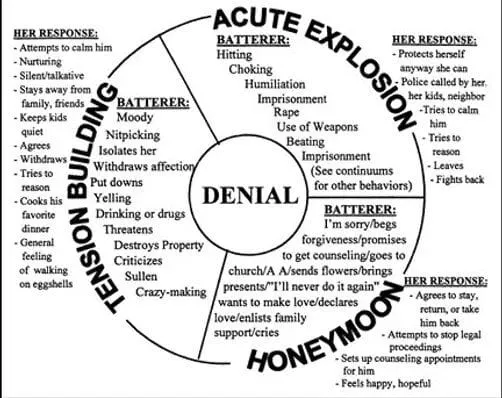Romantic relationships have been the source of joy and anguish since humans have been on the planet. Here, a romantic relationship is defined as an intimate and exclusive relationship between two adults. Adolescent romantic relationship issues are addressed on the Teens and Mental Health page.
While no relationship is perfect, a healthy relationship is one that generally promotes wellbeing for both persons, needs between each person are balanced with those of the other. Relationships can begin pragmatically or from feelings of attraction.
What qualities should you look for in a potential partner? Most people that are dating or want to date have some criteria in mind about their ideal partner. You should have some criteria in mind, but recognize that nobody is likely to fit your exact criteria, but there are somethings to look for as to someone's potential for a long-term healthy relationship. The chart on the right shows characteristics of a healthy relationship.
The chart below highlights some serious warning signs that say you'll be sorry. Sometimes these behaviors show up early in a relationship, such as being belligerent with the wait staff in a restaurant, or getting upset if you don't meet his demands for time. Sometimes controlling and abusive behaviors don't show up until down the road when there's been a commitment made, such as moving in together or marrying.

10 worst relationship moves
- Making him "jealous." If you think insecurity and possessiveness is a sign of love, go for it.
- Moving forward too quickly. Would you buy a house without having it inspected?
- Dating someone that's married or already in a relationship. Will you be surprised when they cheat on you?
- Talking to exes. Unless your partner is part of the friendship and your ex's partner is too.
- Trying to "change" your partner. It will be a continual uphill effort that keeps the focus of the relationship on your partner.
- Hoping your partner will magically change. You'll lose yourself in the process.
- Ignoring red flags. (see chart below) It will get worse, not better.
- Going into a relationship immediately after you or they recently broke up. Bad idea to build a house on shifting sand.
- Cheating. Flirting. Intimate and/or sexual contact with anyone outside the relationship.
- Tolerating the same from your partner. Where there's smoke there's fire.

A note on references to gender here:
While 90% of domestic violence is perpetrated by men, women can be the abusers too. While domestic violence is about the ability to physically overpower someone, and men are generally bigger and stronger, some women are better physical fighters, or take advantage of a man's unwillingness to hit a woman, or make demands under threats of humiliation.
Regardless of gender, any of these behaviors constitutes abuse, either by causing you harm or denying you your rights. People often ignore seemingly isolated incidents, and tend to ignore that there is a recurrent pattern forming.
Many victimized partners hold out hope that the abuser will somehow "change," but almost certainly the relationship will not improve without your abusive partner getting professional help, and even then success rates are far from 100%.
So most importantly, rather than hold out hope indefinitely and put your life on hold, take care of yourself and let your abuser solve their own problem.
These are clear signs of an abusive relationship. Each individual comes in to the relationship with a past that has created their patterns of relating. Each partner has unresolved losses or trauma that keep them maintaining the relationship through these behaviors. Although to friends and family, it makes no sense that the victim stays with the abuser, leaving is not easy for a number of reasons.
For help in leaving a highly abusive dangerous situation call National Domestic Violence Hotline at 1-800-799-7233 for help with safety planning.
If you find yourself in these situations, help is available. For more information, see these website links:
Domestic Violence Resources for Ohio
Domestic Violence Resources for Michigan
For shelter in Lucas County visit the YWCA Battered Women's Shelter
For shelter in Wood County visit The Cocoon Shelter in Bowling Green
FOr more information visit www.hotpeachpages.net

